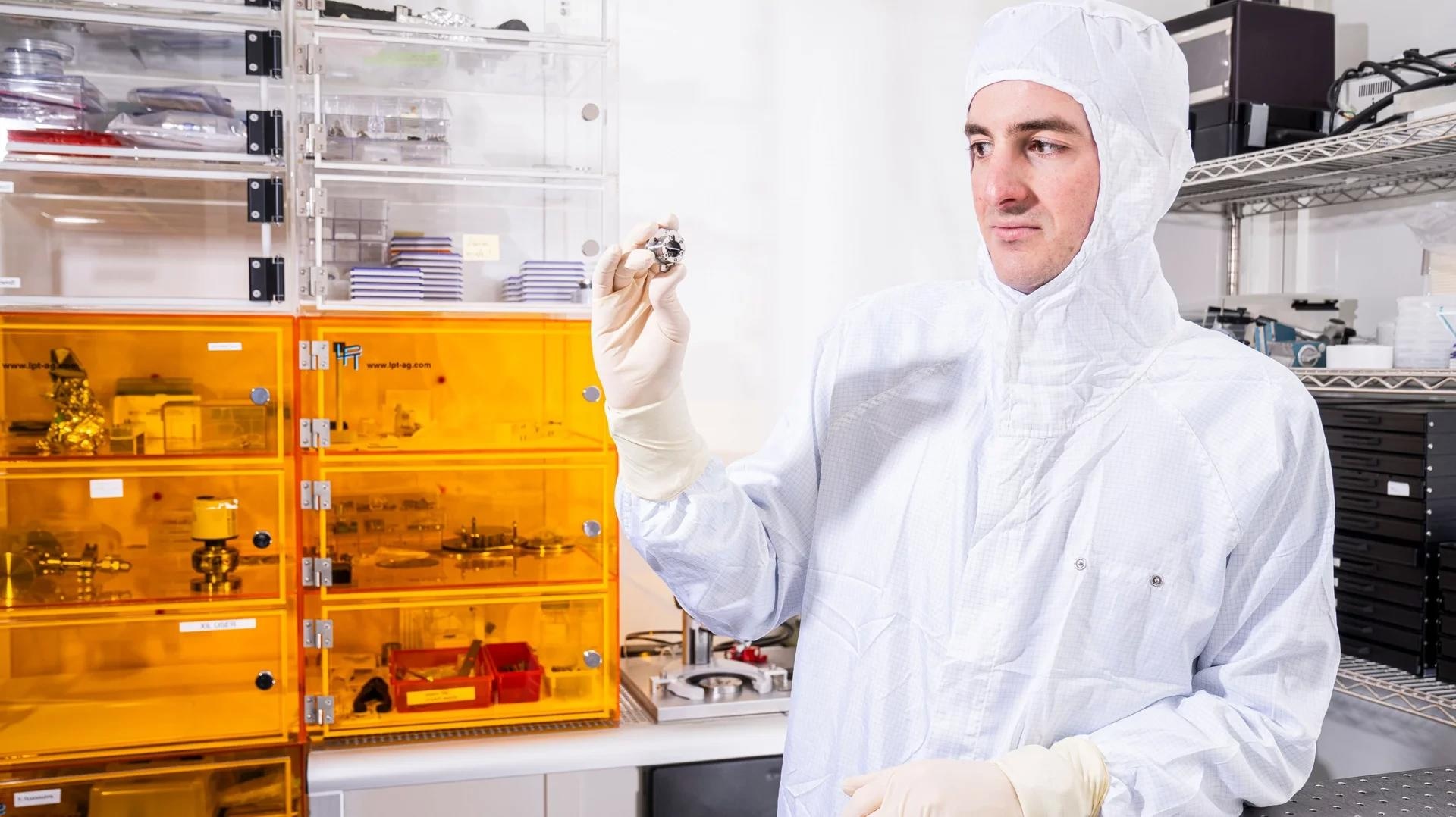Reviewed by Lexie CornerAug 14 2024
Researchers from the Paul Scherrer Institute, Laboratory of X-ray Nanoscience and Technologies, developed a method for producing denser circuit patterns. Modern microchips feature conductive tracks separated by twelve nanometers, approximately 6,000 times thinner than human hair. In this study, researchers have successfully produced tracks with a separation of just five nanometers. The journal Nanoscale published these findings.
 Iason Giannopoulos with part of the apparatus used to carry out the experiments at the Swiss Light Source SLS. Image Credit: Paul Scherrer Institute PSI/Mahir Dzambegovic
Iason Giannopoulos with part of the apparatus used to carry out the experiments at the Swiss Light Source SLS. Image Credit: Paul Scherrer Institute PSI/Mahir Dzambegovic
Reducing the size of computer chips is a vital aspect of digital transformation. This enables computers to become more powerful while also becoming smaller. Miniaturization is essential for advancements in areas such as artificial intelligence, driverless vehicles, and the 5G mobile communications standard.
Our work showcases the patterning potential of light. This is a significant step forward for both industry and research.
Iason Giannopoulos, Laboratory of X-ray Nanoscience and Technologies, Paul Scherrer Institute
Microchips are Produced Like the Pictures on a Cinema Screen
In the early 1970s, a microchip could accommodate only about 1,000 transistors. Today, around 60 billion components can fit into a space just slightly larger than the tip of a finger. This remarkable increase in density is achieved through photolithography, where a light-sensitive layer known as a photoresist is applied to a thin silicon wafer. The wafer is then exposed to a light pattern that corresponds to the microchip's design, altering the chemical composition of the photoresist, making it either soluble or insoluble in specific chemical solutions.
Subsequent treatments remove the exposed (in a positive process) or unexposed (in a negative process) portions, leaving behind the conductive tracks that form the desired wiring design on the wafer.
The type of light used in this process is crucial for the miniaturization and increased compactness of microchips. According to physical principles, the shorter the wavelength of light, the closer the structures in an image can be packed together. The industry has long used Deep Ultraviolet Light (DUV), which has a wavelength of 193 nanometers (nm), much shorter than visible blue light, which has a wavelength of about 400 nm.
Since 2019, manufacturers have shifted to "extreme ultraviolet light" (EUV) with a wavelength of 13.5 nm—over ten times shorter than previous wavelengths. This shift enables the printing of extremely fine structures as small as 10 nm or even less. At the Paul Scherrer Institute (PSI), researchers use radiation from the Swiss Light Source (SLS) calibrated to the 13.5-nm wavelength to align with industry standards, pushing the boundaries of microchip miniaturization.
Photon-Based Lithography Can Achieve Very High Resolution
By using an indirect exposure method, PSI researchers have expanded the capabilities of traditional EUV lithography. In the process known as EUV Mirror Interference Lithography (MIL), two identical mirrors reflect two mutually coherent beams onto the wafer.
The period of the interference pattern produced by these beams is determined by the angle of incidence and the light's wavelength. Through this technique, the team achieved resolutions, or track separations, of 5 nm in a single exposure. When observed under an electron microscope, the conductive tracks exhibited sharp edges and excellent contrast, demonstrating the precision of this advanced method.
Our results show that EUV lithography can produce extremely high resolutions, indicating that there are no fundamental limitations yet. This is really exciting since it extends the horizon of what we deem as possible and can also open up new avenues for research in the field of EUV lithography and photoresist materials.
Dimitrios Kazazis, Laboratory of X-ray Nanoscience and Technologies, Paul Scherrer Institute
A New EUVL Tool From the End of 2025
Although this approach is currently not viable for industrial chip fabrication due to its slower speed and limitation to creating only simple, periodic structures, it offers a valuable method for the early development of photoresists with resolutions beyond current industry capabilities—essential for future chip fabrication.
The team plans to continue their research with a new EUV tool at the Swiss Light Source (SLS) by the end of 2025. When combined with the upgraded SLS 2.0, this new tool is expected to provide significantly enhanced performance and capabilities, advancing the field of photolithography.
Journal Reference:
Giannopoulos, L., et al. (2024) Extreme ultraviolet lithography reaches 5 nm resolution. Nanoscale. doi.org/10.1039/D4NR01332H.